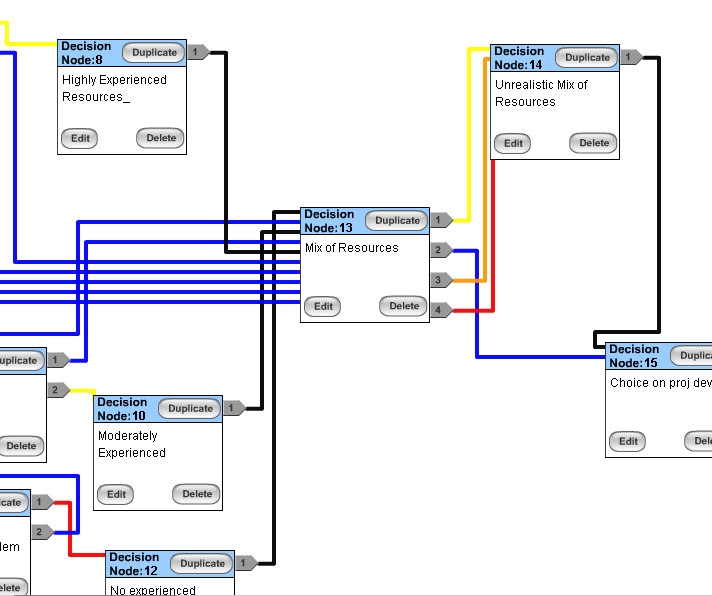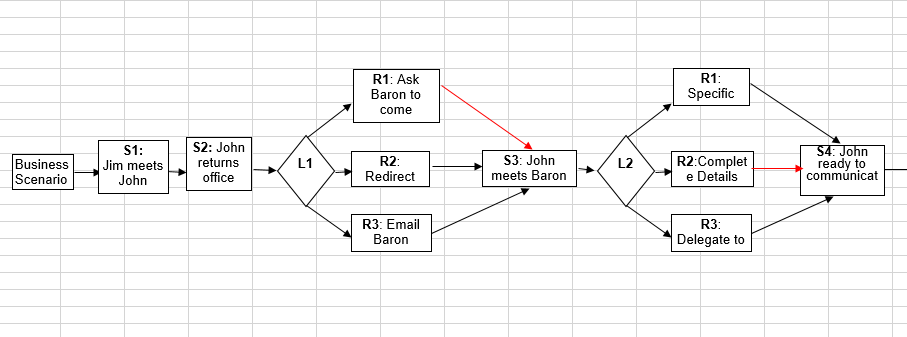How did I end up scripting and contributing to building Element K India’s first 3D Business Simulation?
I embraced a challenge that came my way, and it made all the difference!
Background:
My team was working on a PMP certification course titled “Project Management Essentials,” which involved creating a realistic business simulation scenario. This scenario was designed to take the audience through the experience of making critical decisions to effectively manage projects.
Target Audience:
The audience consisted of managers with limited or no experience in project management who needed to plan, build, and manage a team to take a project to completion. They had to make decisions based on the performance outcome steps (POs) they learned earlier in the course. Even bad decisions would lead them through branching paths, educating them on the repercussions of poor choices.
Challenge:
The key challenge was creating the basic structure for the simulation—a layout of scenario stems and options that branched into possible good and bad outcomes. At that time, I had only one year of instructional design experience and was not initially part of the project. However, my Project Lead asked me to take a shot at it because I often discussed films, screenplays, and their structures with my teammates.

Approach:
From my viewpoint, plotting and writing a business simulation was analogous to that of a screenplay. I went through the module and the associated performance outcome (steps) which were the cornerstone for building the simulation. I was able to connect the dots between the decision points, the overall objectives of the module and the learning path.
Learning needs and goals easily fit into the screenwriting structure: Needs -> Decisions -> Obstacles -> Better Decisions -> Resolution
I used the recommended performance outcome steps as decision points and used them as milestones. I cracked the layout in 2 days and when I sat with the SME for a few hours to understand the consequences of a bad decision in a realistic situation, I was done with the overall scheme. Over the next two weeks, I wrote the dialogues and scenes for each the scenes leading to and branching from the decision points.
Execution:
My effort received unanimous praise and I was really glad I could crack the design. I was then approached to work on several such courses from various teams. Later, on a course “Motivating IT Teams”, we (3D team and I) worked on creating business simulation content in 3D format. I worked on the structure, dialogues and also created a new reference design for our internal communication – to understand how the content and decisions connect/deviate within the overall structure.
The 3D Business Simulation was the first one created at Element K India and used game-like features throughout the simulation. Character biographies were created and then crafted using 3D tools. The conversations were then animated as video nuggets and the simulation was constructed to take the audience on the different path each time, they make a decision.



Approach:
From my perspective, plotting and writing a business simulation was analogous to crafting a screenplay. I reviewed the module and the associated performance outcome steps, which were the foundation for building the simulation. I connected the dots between the decision points, the overall objectives of the module, and the learning path.
Learning needs and goals easily fit into the screenwriting structure: Needs -> Decisions -> Obstacles -> Better Decisions -> Resolution.
I used the recommended performance outcome steps as decision points and milestones. I developed the layout in two days, and after spending a few hours with the SME to understand the consequences of bad decisions in realistic situations, I completed the overall scheme. Over the next two weeks, I wrote the dialogues and scenes leading to and branching from the decision points.
Execution:
My effort received unanimous praise, and I was thrilled to have successfully designed the simulation. I was subsequently approached to work on several similar courses from various teams. Later, on a course titled “Motivating IT Teams,” the 3D team and I collaborated to create business simulation content in a 3D format. I worked on the structure, dialogues, and also created a new reference design for our internal communication to understand how the content and decisions interconnected within the overall structure.
The 3D Business Simulation was the first of its kind created at Element K India, utilizing game-like features throughout the simulation. Character biographies were developed and crafted using 3D tools. The conversations were then animated as video nuggets, and the simulation was designed to take the audience on a different path each time they made a decision.